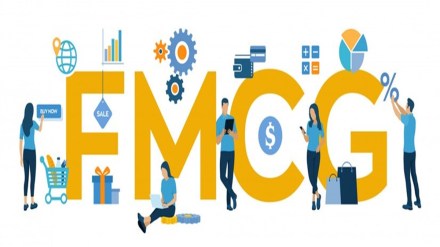For analysts, investors and stakeholders, the country’s Rs 5-lakh-crore FMCG market has been a dependable industry that delivers consistent returns year after year. The year ending 2024, however, saw the ‘defensive’ FMCG market crack open as demand challenges, notably, in urban areas, hurt overall growth rates. This is even as rural areas saw a revival in demand on the back of good monsoons and a strong harvest this year. It isn’t helping that inflation in both food and non-food is getting sticky, forcing companies to consider price hikes in the future.
While most players are hoping for a turnaround as early as April of 2025, the December quarter of 2024, like much of the previous three quarters, may not provide any respite for firms at the moment, experts say.
Godrej Consumer (GCPL) said it expected flattish underlying volume growth and mid-single digit sales growth for the quarter due to subdued demand conditions, notably in soaps and household insecticides in the December quarter.
“The surge in palm oil and derivatives prices to the extent of a y-o-y rise of 20-30% has impacted the soaps category, which represents one-third of our standalone business revenue. To partly offset the cost hikes we have taken price increases, reduced grammage of key packs and reduced various trade schemes,” GCPL said.
It also added that delayed winters in the north and cyclones in the south had hurt the household insecticides business, which also constituted a third of its standalone revenue.
GCPL did not provide an update of its consolidated business operations for the December quarter.
While peers such as Dabur India, Marico and Adani Wilmar are expected to release their Q3FY25 quarter updates in the near future, in a recent conversation with FE, CEO Mohit Malhotra had indicated that the period remained challenging from a demand and sales perspective.
“Demand has been weak in the December quarter. FMCG (sales) offtake has not been good at all. Retail and wholesale trade are also cash-strapped,” Malhotra said.
Apart from food consumption, which has been impacted due to inflationary pressures in wheat, tea, sugar, edible oil and cocoa, among other commodities, Malhotra said consumption in non-food categories such as home and personal care was weak as consumers in general cut back on expenditure.
In a presentation during the CII National FMCG Summit last week, Joydeep Bhattacharya, senior partner, consumer and retail, Bain & Company, said that revenue growth of the top 50 listed FMCG companies had been lagging India’s nominal GDP growth rate for some time now.
The last three quarters (March quarter of FY24 and the June and September quarters of FY25) were particularly bad, he said. Revenue growth of listed FMCG firms was between flat and 6%, even as nominal GDP growth (which includes inflation) was between 8% and 10%.
“We expect overall FMCG industry revenue growth to return to a consistent lower double-digit growth over the next three to five years. We see relatively higher contribution from volume growth compared to prior years, varying across categories,” Bhattacharya said.
Companies such as Adani Wilmar, the maker of the Fortune brand of edible oils, however, has been counting on the ongoing wedding season to spur consumption. “If the long wedding season wasn’t there, then edible oil consumption could have been hit due to high product prices triggered by September import duty hikes,” Angshu Mallick, MD & CEO, Adani Wilmar, said.
The net increase of a 22% duty hike on crude and refined edible oil on September 13, triggered a cutback in imports. This resulted in a hike in domestic prices, according to experts.
While the first phase of the edible oil hike of around 10-15% has been initiated, the second phase of around 7-10% in terms of price hikes would be done in the coming months, sector analysts tracking the market said.
